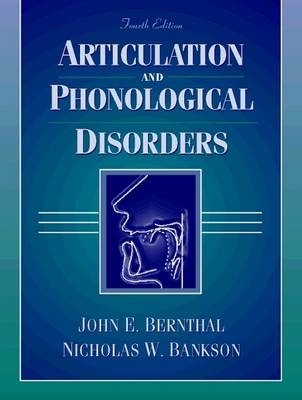
Articulation and Phonological Disorders
Pearson (Verlag)
978-0-205-19693-7 (ISBN)
- Titel ist leider vergriffen;
keine Neuauflage - Artikel merken
The additions to the text include current research data, expanded coverage of dialects, and information on the use of technology in clinical phonology. Several chapters have been reorganized for overall cohesiveness. Bernthal and Bankson have synthesized the literature so that the student can view clinical phonology from a broad perspective.
All chapters conclude with “References.”
1.Normal Aspects of Articulation, Ray Kent.
Introduction.
Fundamentals of Articulatory Phonetics.
Coarticulation: Interaction among Sounds in Context.
Aerodynamic Considerations in Speech Production.
Acoustic Considerations of Speech.
Sensory Information in Speech Production.
Generative Phonology.
Summary of Levels of Organization of Speech.
Concluding Note on Implications for Speech Acquisition.
2.Early Phonological Development, Marilyn May Vihman.
Models of Phonological Development: The Child as an Active Learner.
Infant Perception: Breaking into the Code.
Infant Production: Interaction of Maturation and Experience.
The Transition Period: From Babble to Speech.
Individual Differences: Profile of Two One-Year-Old Girls.
Linguistic Perception: Representing Speech Sounds.
Systematization and Reorganization: From Word to Segment.
3.Later Phonological Development, Marilyn May Vihman.
Establishing Group Norms: Large Scale Studies.
Phonological Processes: Systematicity in Production Errors.
Profiling the Preschool Child: Individual Differences Revisited.
Development of Perception Beyond Early Childhood: Understanding Running Speech.
Production in the School-Age Child: Continuing Change.
4.Language and Dialectical Variations, Aquiles Iglesias and Brian Goldstein.
Introduction.
Language Varieties.
Dialectal Variations.
Phonological Development in Speakers of Languages Other than English.
Spanish.
Asian Languages.
Native American Languages.
Assessment.
Intervention for Phonological Disorders in Children from Culturally and Linguistically Diverse Populations.
5.Factors Related to Phonological Disorders, Nicholas Bankson and John Bernthal.
Introduction.
Structure and Function of the Speech and Hearing Mechanisms.
Cognitive-Linguistic Factors.
Psychosocial Factors.
6.Phonological Assessment Procedures, Nicholas Bankson and John Bernthal.
Phonological Sampling.
Screening for Phonological Disorders.
The Assessment Battery.
Related Assessment Procedures.
7.Analysis and Interpretation of Assessment Data, Nicholas Bankson and John Bernthal.
Determine the Need for Intervention.
Target Behavior Selection.
Other Factors to Consider in Case Selection—Intervention Decisions.
8.Remediation Concepts, Principles, and Methodologies, Nicholas Bankson and John Bernthal.
Basic Considerations.
Treatment Approaches.
Motor-Based Approaches to Intervention.
Teaching Sounds: Establishment of Target Behaviors.
Beyond Teaching Sounds: Overall Treatment Approaches.
Linguistic-Based Approaches to Intervention.
Remediation Guidelines for Linguistic Approaches.
Making Progress in Therapy: Response Generalization.
Intervention for Children with Developmental Verbal Dyspraxia. (DVD)
Phonological Awareness and the Speech-Language Pathologist.
9.Instrumentation in Clinical Phonology, Julie Masterson, Steven Long, and Eugene Buder.
Computerized Phonological Analysis.
Computerized Acoustic Phonetic Analysis.
Summary.
Appendix.
Procedures for Teaching Sounds.
Author Index.
Subject Index.
| Erscheint lt. Verlag | 16.2.1998 |
|---|---|
| Sprache | englisch |
| Maße | 183 x 244 mm |
| Gewicht | 829 g |
| Themenwelt | Medizin / Pharmazie ► Gesundheitsfachberufe ► Logopädie |
| ISBN-10 | 0-205-19693-4 / 0205196934 |
| ISBN-13 | 978-0-205-19693-7 / 9780205196937 |
| Zustand | Neuware |
| Haben Sie eine Frage zum Produkt? |
aus dem Bereich


